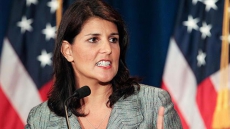With Indians and other Asian Americans and Pacific Islanders growing in number at a fast pace, people of colour will be in the majority in the US by mid-century, according to a new report.
They are also quickly reaching the critical mass needed to be politically relevant, says the report from the Centre for American Progress and AAPI Data on how the growth of this group will affect a variety of key policy areas from immigration and education to healthcare and the environment.
With the Indian-American population shooting up 76 percent in the first 12 years of the 21st century, Indian-Americans numbering 3.34 million are already the third largest Asian community in the US, after people from China and the Philippines.
The top six groups -- Chinese, Filipino, Indian, Vietnamese, Korean and Japanese -- account for 85 percent of all residents, the report noted.
"While this shows a fair amount of national origin concentration, it nevertheless represents a decline from 89 percent for these top six groups in 2000, as smaller Asian American groups have grown disproportionately in the last decade," noted authors Karthick Ramakrishnan and Farah Ahmad.
Chinese are still by far the largest group of Asian-American population with 4.1 million (22 percent), Filipinos come next with 3.59 million (19 percent) followed by Indians with 3.34 million (18 percent) in the third place.
But with the growth rates for other national origin groups changing faster during this decade, Indians and Filipinos, for example, are now about equal in size.
This is due largely to the 76 percent growth rate of Indian Americans from 2000 to 2012, compared to the growth rate of Filipino Americans of only 52 percent during the same time period.
As many as 56 percent of the Asian-American population lives in the top five states of California, New York, Texas, New Jersey and Hawaii, the report noted.
The largest concentration of Indian-Americans is in three States -- California (19 percent), New York (12 percent) and New Jersey (10 percent).
Hindus (51 percent) are in majority among Indian-Americans, followed by Christians (18 percent), Muslims (10 percent), Sikhs (5 percent), Jains (2 percent) and Buddhists (1 percent).
Some smaller groups such as Bangladeshi-Americans grew at an exceptional rate -- 177 percent -- between 2000 and 2010.
If this rate is maintained, it will have a large impact on the future diversity of the Asian-American community, the report said.
Other highlights:
The fastest-growing states for Asian Americans are Nevada, Arizona, North Dakota, North Carolina and Georgia, where the populations more than doubled between 2000 and 2012.
About 55 percent of Asian Americans prefer an activist government that provides more services than a smaller government that provides fewer services.
Asian Americans are among the most open to diversity when compared to other racial groups.
About 69 percent of Asian Americans consider themselves environmentalists, some 30 percentage points higher than the national average.
About 58 percent of Asian Americans support a path to citizenship for undocumented immigrants.
(Arun Kumar can be contacted at arun.kumar@ians.in)





